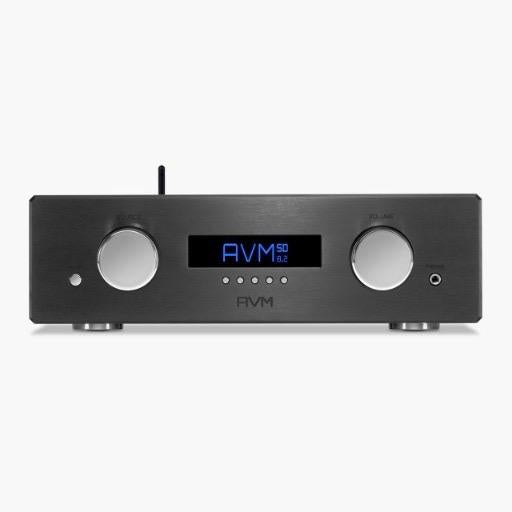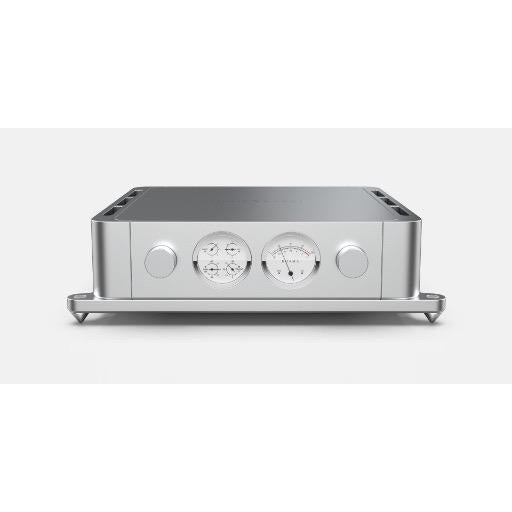Upgrade Your Audio: Preamplifier Edition
Preamplifiers, often known as preamps, act as an essential conduit in your audio setup, amplifying weaker signals for further processing. Regardless of whether you're an ardent music enthusiast or a casual listener, understanding the function and significance of a preamplifier can significantly upgrade your audio experience. In this Preamplifier Edition, we'll take you on an enlightening journey, dissecting the world of preamplifiers and their impact on sound quality.
Decoding the Preamplifier: What is it?
In the simplest of terms, a preamplifier is a device that prepares a small electrical signal for amplification. It's a critical component that sits between your source (be it a turntable, digital music player, or any other) and your amplifier, boosting the signal's strength without distorting its quality. A preamplifier serves a dual purpose: it allows for precise volume control and enables switching between different sources.
The Impact of a Preamplifier on Sound Quality
It's a common misconception that preamplifiers do not significantly affect sound quality. In reality, a high-quality preamplifier can dramatically enhance your audio, offering more detailed and natural sound reproduction. Conversely, a poorly designed preamplifier can degrade the signal, resulting in reduced audio fidelity.

The Journey of Sound: Understanding the Audio Signal Path
To comprehend the role of a preamplifier in upgrading your audio, it's important to understand the audio signal path. This chain begins at the source, moves to the preamplifier for signal boosting and source selection, then to the power amplifier for larger amplification, and finally to the speakers for sound production.
Types of Preamplifiers: Tubes vs. Solid State
The choice between tube and solid-state preamplifiers largely depends on personal preference. Tube preamplifiers are known for their warm, rich sound and are often favored by vinyl enthusiasts. On the other hand, solid-state preamplifiers provide precise, clean sound reproduction, making them popular for digital audio setups.
Deciphering Preamplifier Specifications
Specifications can be intimidating, especially for audio equipment. However, understanding these can help in making an informed decision. Key specifications to look for in preamplifiers include signal-to-noise ratio, total harmonic distortion, and gain control, each playing a vital role in the overall audio quality.

Integration: Fitting a Preamplifier into Your Audio Setup
Integrating a preamplifier into your audio setup can be a smooth process with the right guidance. It's important to note that your preamplifier should be compatible with your other equipment, like your amplifier and sources, to ensure optimal performance.
Upgrade Your Audio: Preamplifier Selection
Selecting a preamplifier isn't merely about choosing the most expensive model; it's about understanding your needs and preferences. Factors such as your audio sources, desired sound characteristics, and budget all play a role in finding the perfect preamplifier to upgrade your audio.
Brand Spotlight: Top Preamplifier Brands to Consider
From classic names like McIntosh and Marantz to emerging brands, the preamplifier market is filled with a variety of options. We'll highlight some of the best preamplifier manufacturers known for their excellent sound quality and build.
Price vs. Performance: Preamplifier Budget Guide
There's a common notion that price is directly proportional to performance, but is that really the case? This section will delve into understanding the relationship between price and performance when it comes to preamplifiers.
Step by Step: Setting Up Your Preamplifier
Setting up your preamplifier might seem daunting, but with a systematic approach, it can be a breeze. From unboxing to connection, this section will guide you through every step.

Maintenance and Care: Keeping Your Preamplifier at Peak Performance
Like any piece of equipment, preamplifiers need proper care and maintenance to deliver the best performance. We'll cover cleaning, storage, and handling tips to keep your preamplifier in tip-top condition.
Troubleshooting: Dealing with Preamplifier Issues
Experiencing problems with your preamplifier? Fear not! We'll provide troubleshooting tips for the most common preamplifier issues, from noise issues to signal loss.
Evolution of Preamplifiers: A Trip Down Memory Lane
The design and technology of preamplifiers have significantly evolved over the years. This section will trace the historical development of preamplifiers, looking at key milestones and how they've shaped today's audio landscape.
Preamplifier Tech: The Future of Audio Amplification
As technology advances, so does the world of preamplifiers. This section explores the potential future of preamplifiers and their role in shaping the next generation of audio.
Audio Ecosystem: Preamplifiers and Other Audio Components
Preamplifiers don't function in isolation. They're part of a larger audio ecosystem that includes sources, amplifiers, and speakers. We'll delve into this interconnected relationship and how each component contributes to the overall audio experience.
The Art of Listening: How a Preamplifier Changes the Game
Can a preamplifier truly transform your listening experience? Spoiler alert: yes, it can! This section delves into the qualitative differences a preamplifier can make in your listening journey.
Myths Debunked: Preamplifier Misconceptions
Despite their essential role, preamplifiers are surrounded by a host of misconceptions. From their impact on sound quality to their perceived complexity, we'll debunk some common myths around preamplifiers.
Glossary: Preamplifier and Audio Terms You Should Know
From gain control to impedance, the world of audio can be jargon-heavy. This handy glossary will demystify common terms, equipping you with the language to better understand and discuss preamplifiers and audio in general.
Shop Smart: Where to Buy Preamplifiers
Purchasing a preamplifier isn't just about choosing the right model; it's also about finding a trustworthy retailer. This section will guide you on where to buy preamplifiers, both online and offline.
Useful Tips: Optimizing Your Preamplifier Experience
To get the most out of your preamplifier, it's important to know how to optimize your setup. From positioning tips to calibration, this section will help you fine-tune your preamplifier experience.

Comparative Analysis: Preamplifier vs. No Preamplifier
To truly understand the impact of a preamplifier, it's useful to make a direct comparison. This section provides a side-by-side comparison of audio setups with and without a preamplifier, highlighting the differences in sound quality.
Preamplifier Testimonials: Real User Experiences
The best way to gauge the value of a preamplifier is through the experiences of those who've used them. This section shares testimonials from real users, providing insight into how preamplifiers have transformed their audio experiences.
FAQs: All Your Preamplifier Questions Answered
Still have burning questions? This section provides answers to the most frequently asked questions about , from their basic function to their role in your audio setup.
Closing Thoughts: Why You Should Upgrade Your Audio with a Preamplifier
To wrap things up, this final section will recap why a preamplifier is a valuable addition to your audio setup. It's more than just a device – it's your ticket to an upgraded audio experience.
FAQs
What is a preamplifier and why do I need one?
A preamplifier is an essential audio component that boosts weaker signals for amplification. It's critical in any serious audio setup because it allows for precise volume control and enables the switching between different sources without any loss in sound quality.
Does a preamplifier improve sound quality?
Yes, a high-quality preamplifier can significantly improve your sound quality. It ensures a more detailed and natural sound reproduction, while a poorly designed preamplifier can degrade the signal, leading to a loss in audio fidelity.
What's the difference between a tube and a solid-state preamplifier?
Tube preamplifiers are known for their warm, rich sound and are often favored by vinyl enthusiasts. Solid-state preamplifiers, on the other hand, offer precise and clean sound reproduction, making them popular for digital audio setups.
How do I set up a preamplifier?
Setting up a preamplifier involves connecting your audio source to the preamplifier and then connecting the preamplifier to your amplifier. The specifics can vary depending on your particular setup, so it's crucial to read and follow the manufacturer's instructions.
Where can I buy a preamplifier?
Preamplifiers can be purchased from various sources, including electronics retailers, online marketplaces like Amazon, and directly from the manufacturer's website. It's important to buy from a reputable source to ensure you're getting a genuine product.
How does a preamplifier fit into the audio signal path?
The audio signal path starts at the source (such as a turntable or digital music player), then moves to the preamplifier for signal boosting and source selection, then to the power amplifier for larger amplification, and finally to the speakers for sound production.

Conclusion
In the world of audio, the importance of a good preamplifier can't be overstated. From improving sound quality to enabling precise volume control, a preamplifier can truly upgrade your audio experience. Whether you're a seasoned audiophile or a casual listener, investing in a high-quality preamplifier is a step towards a more immersive and rewarding listening experience.
So go ahead, make the move, and Upgrade Your Audio: Preamplifier Edition.

